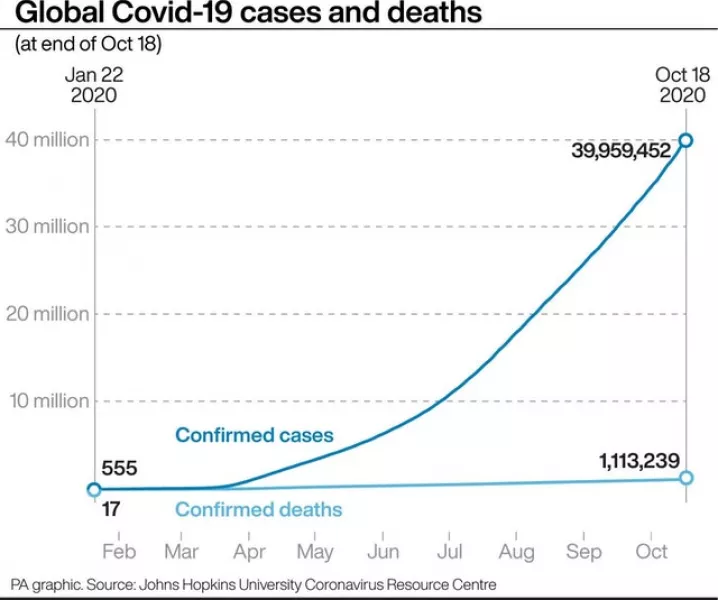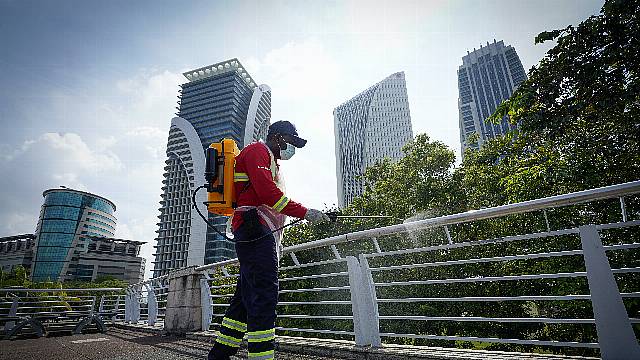New York’s latest round of virus shutdowns zeroes in on individual neighbourhoods, closing schools and businesses in hotspots measuring just a couple of square miles.
Meanwhile, Spanish officials limited travel to and from some parts of Madrid before restrictions were widened throughout the capital and some suburbs.

Italian authorities have sometimes quarantined areas as small as a single building.
While countries including Israel and the Czech Republic have reinstated nationwide closures, other governments hope smaller-scale shutdowns can work this time, in conjunction with testing, contact tracing and other initiatives.
The concept of containing hotspots is not new, but it is being tested under new pressures as authorities try to avoid a dreaded resurgence of illness and deaths, this time with economies weakened from earlier lockdowns, populations chafing at the idea of renewed restrictions and some communities complaining of unequal treatment.
Some scientists say a localised approach, if well-tailored and explained to the public, can be a nimble response at a complex point in the pandemic.

Dr Wafaa El-Sadr, who is on advisory boards in New York City, said: “It is pragmatic in appreciation of ‘restriction fatigue’ … but it is strategic, allowing for mobilisation of substantial resources to where they are needed most.”
Other scientists are more wary. Benjamin Althouse, a research scientist with the Institute for Disease Modelling in Washington state, said: “If we’re serious about wiping out Covid in an area, we need co-ordinated responses.”
Mr Althouse and other scientists have found that amid patchwork coronavirus-control measures in the US this spring, some people travelled farther than usual for such activities as worship, suggesting they might have responded to closures by moving to less-restricted areas.

However, he noted that choosing between limited closures and more widespread restrictions is “a very, very difficult decision”, adding: “I’m glad I’m not the one making it.”
Early in the outbreak, countries tried to quell hot spots from Wuhan, China – where a stringent lockdown was seen as key in suppressing transmission in the world’s most populous nation – to Italy, where a decision to seal off 10 towns in the northern region of Lombardy evolved within weeks into a nationwide lockdown.
After the virus’s first surge, officials fought flare-ups with city-sized closures this summer in places from Barcelona, to Seoul, to Melbourne.
In New York’s most restricted “red zones”, houses of worship cannot admit more than 10 people at a time and schools and non-essential businesses have been closed. Those zones are ensconced in small orange and yellow zones with lighter restrictions.

Some researchers, however, say officials need to consider not just where people live, but where else they go. For example, in New York City, people can escape restrictions entirely by taking the subway one or two stops.
Residents of working-class areas in Madrid under mobility restrictions said authorities were stigmatising the poor.
Restaurant and bar owners in Marseille, France, said the city was unfairly targeted last month for the nation’s toughest virus rules at the time. As of Saturday, several French cities, including Paris and Marseille, were subject to restrictions including a 9pm curfew.
When an apartment complex housing mostly Bulgarian migrant farm workers was locked down in late June in the Italian city of Mondragone, the workers protested, and about a dozen broke the quarantine.
Other residents of Mondragone feared infection would spread and, at one point, surrounded the buildings and jeered at the residents, one of whom tossed down a chair. Eventually, authorities called in the army to maintain the quarantine and keep the peace.
For hotspot shutdowns to work, public health experts say, the message behind the measures is key.
Rutgers University epidemiology and biostatistics professor Henry F Raymond said: “Lead with: ‘Here’s a community in need. We should be empathetic.’
“It’s not a criticism of those people’s behaviours. It’s just saying: ‘These communities might need more attention.'”







